2010 HFP IFEX forecast and mission planning discussion
July 6, 2010
Forecast scenario
The activity over the Atlantic basin is confined to a system in the NW
Caribbean, AL96. This system consisted of a cluster of showers and
thunderstorms with fairly cold cloud tops over the Yucatan channel near the
peninsula (Fig. July6-1). These showers and thunderstorms have persisted for
24-36 h, and in fact looked even more impressive in terms of areal coverage
and intensity the previous day. Looking back at ATCF fixes from the previous
2 days (Fig. July6-2), it is clear that the circulation center had been
tracking generally west-northwestward and northwestward. This motion is
generally consistent with the layer-averaged steering flow between 700 and
850 hPa (Fig. July6-3). The NOGAPS analysis of 850 hPa vorticity from the
CIMSS web site (Fig. July6-4) showed a diffuse area of high vorticity that
stretched from north of the Yucatan peninsula southward along the east coast
of the Yucatan into Belize and Honduras. The upper-level winds showed a
well-defined anticyclone over the Yucatan (Fig. July6-5), with low shear
values in the middle of the anticyclone but higher shear values near 20 kt on
the east side near the area of deepest convection (Fig. July6-6). The
presence of the anticyclone aloft, the area of persistent, deep convection,
albeit in a broad region, and the suggestion of cyclonic rotation in visible
satellite animations all suggested that this was a system that had the
potential to develop into a tropical depression. Numerical guidance also
suggested, for some models at least, that development was possible. Both
Decay-SHIPS and LGEM steadily intensified the system to strong tropical storm
strength (Fig. July6-7). While both of these models already assume a tropical
depression, which this system certainly was not at this time, the fact that
they were developing it indicated that the system was in a favorable (or at
least non-hostile) large-scale environment for development. It should be
noted, however, that the dynamical models, including HWRF and GFDL, did not
indicate development. Those models had been vacillating between no
development and slow development to a tropical storm in several cycles leading
up to 06 UTC July 6. Track guidance suggested a generally west-northwestward
track, with the center being about 100 km offshore the Yucatan by 24 h after
initial time at 06 UTC July 6 (Fig. July6-8).
Mission plan
For the reasons outlined above, it was decided to task the P-3 N42 for
back-to-back missions, first takeoff at 20 UTC July 6 and subsequent takeoff
for 08 UTC July 7, to conduct genesis missions into AL96. Also the G-IV was
tasked for a research mission into the Gulf of Mexico and NW Caribbean to
sample the large scale environment, with the goal of better specifying the
large-scale shear environment and possibly sampling dry air that could impact
the system. While the system was approaching land at the time the decision
was made, it was felt that there was a reasonably-good chance that the
circulation center would have emerged from the Yucatan by 00 UTC July 6, when
the first P-3 mission would be arriving at the IP. The flight pattern would
consist of a split lawnmower pattern, essentially traversing along the north
and west coasts of the Yucatan and then down the east side of the peninsula.
The follow-on P-3 mission would conduct a square-spiral mission over the
system that was anticipated to have re-emerged off the north coast of the
Yucatan into the southern Gulf of Mexico. Follow-on missions are planned,
but they may be cancelled depending on the system structure to be decided at
a conference call the following morning at 14 UTC July 7.
In addition to the meteorological and scientific reasons for tasking the P-3's
mentioned above, it was felt that conducting these missions would be a good
test of the system, as well as familiarizing the scientific crew with the
aircraft, software, and personnel onboard the aircraft. This should help to
streamline operations later in the season.
Rob Rogers
HFP Field Program Director 2010
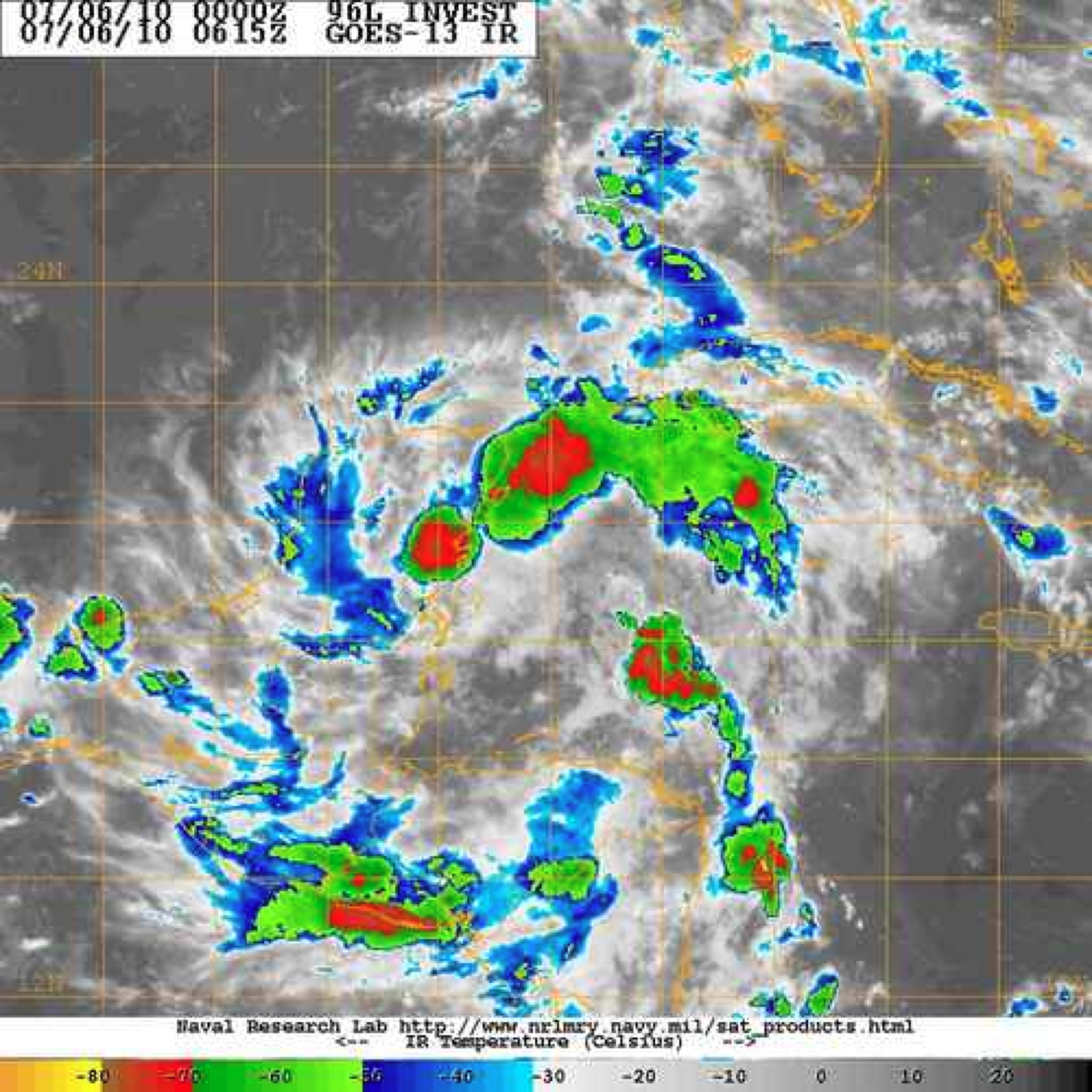
Figure July6-1. GOES-East enhanced infrared image valid 0615 UTC July 6
Courtesy NRL-Monterery
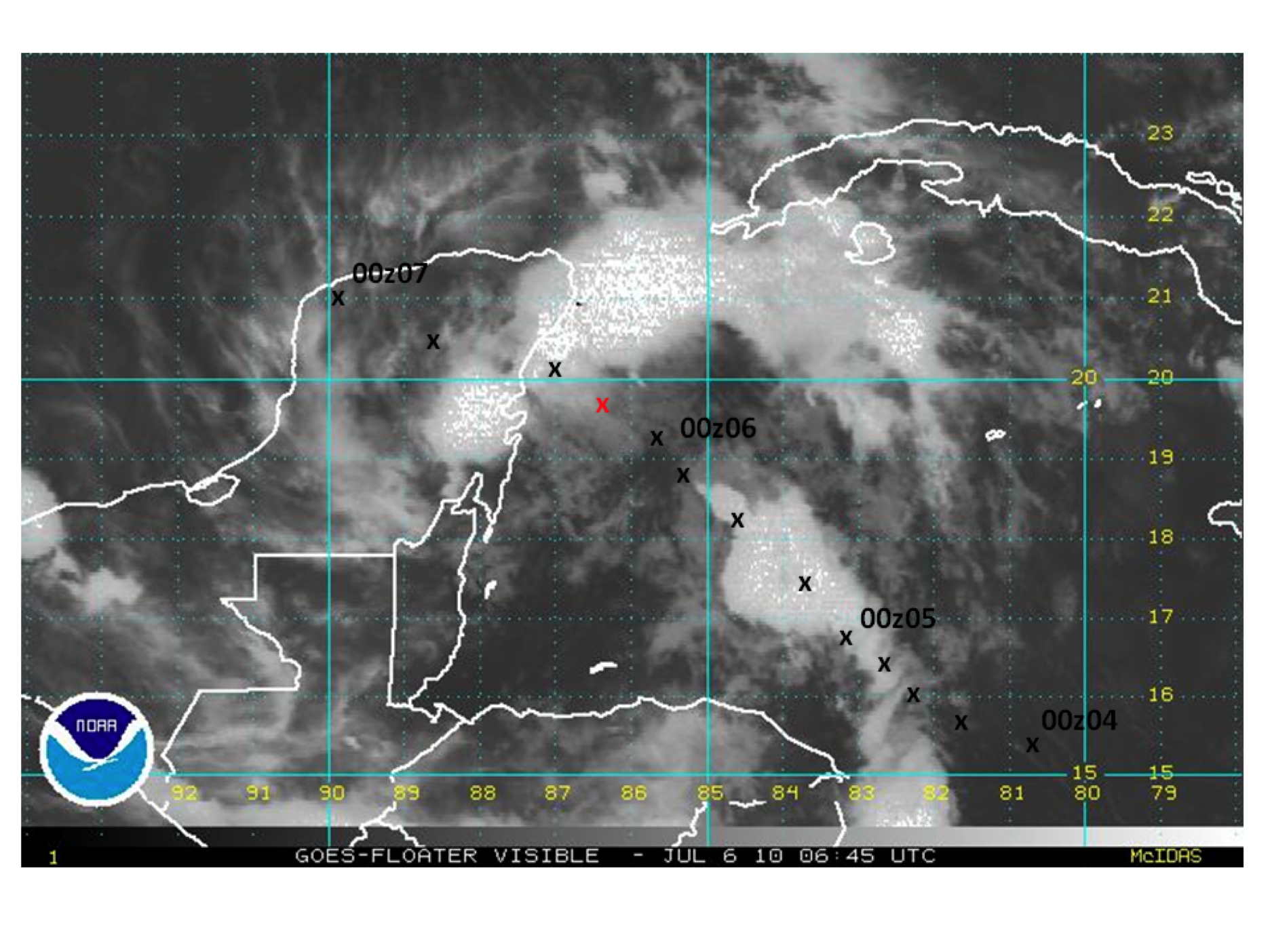
Figure July6-2. GOES-East shortwave infrared image valid 0645 UTC July 6. X's overlain are ATCF fixes valid every six hours from 00 UTC July 4 to 00 UTC July 7.
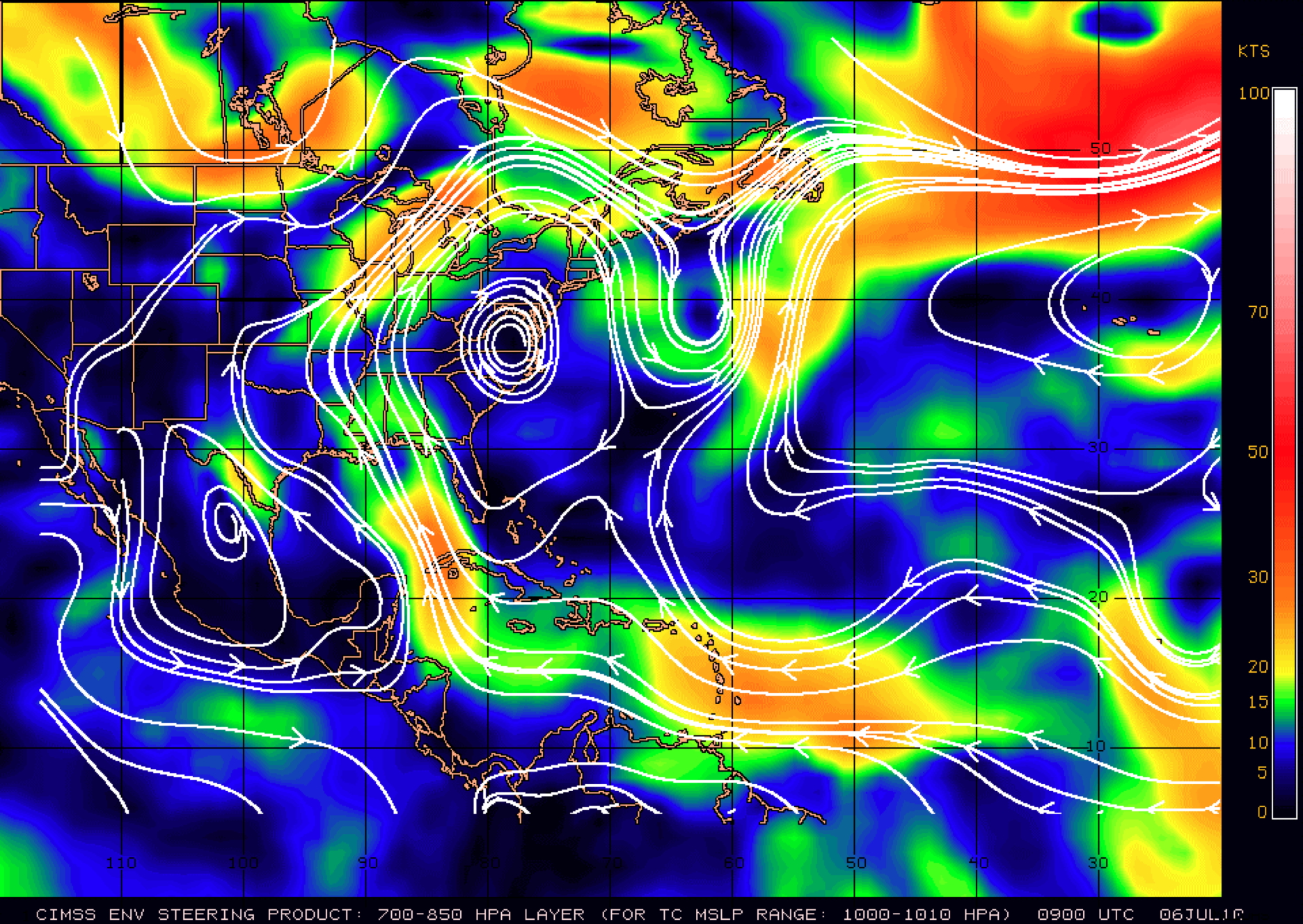
Figure July6-3. Layer-mean wind averaged between 700 and 850 hPa valid 09 UTC July 6.
Courtesy CIMSS-U. Wisconsin.
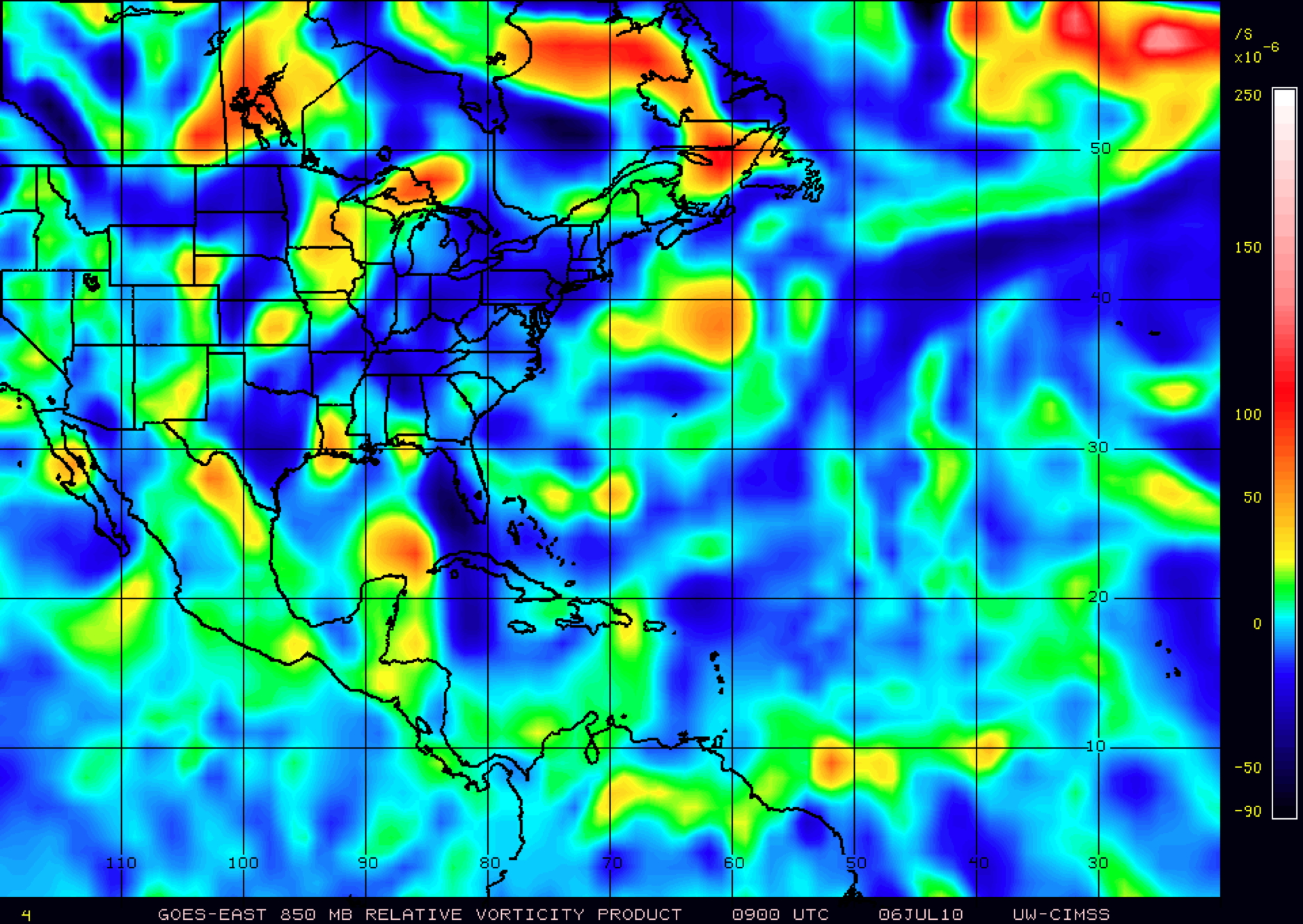
Figure July6-4. 850 hPa vorticity valid 09 UTC July 6 derived from NOGAPS analysis supplemented with satellite cloud-track winds.
Courtesy CIMSS-U. Wisconsin.
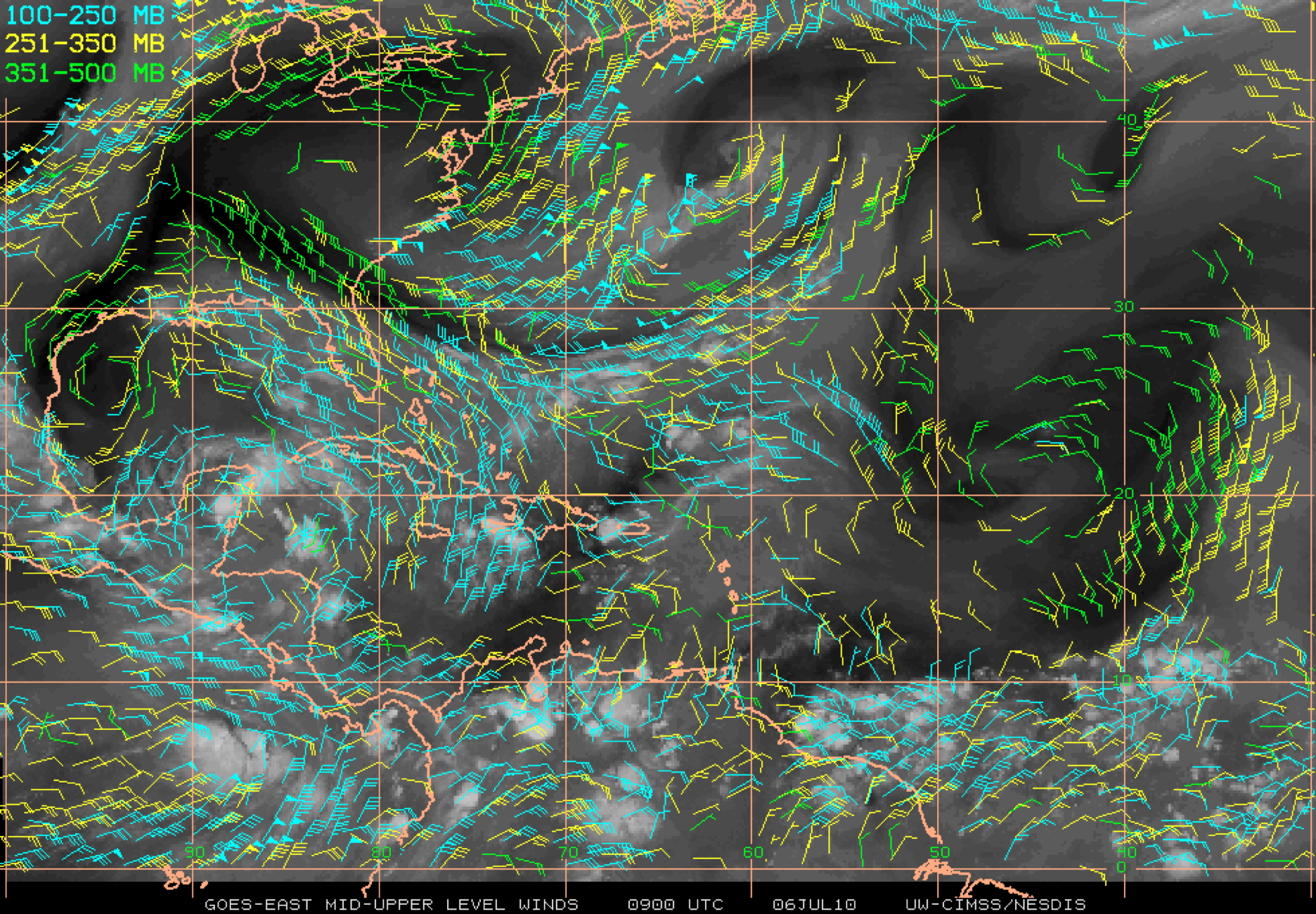
Figure July6-5. Upper-level satellite-derived cloud drift winds valid 09 UTC July 6.
Courtesy CIMSS-U. Wisconsin.
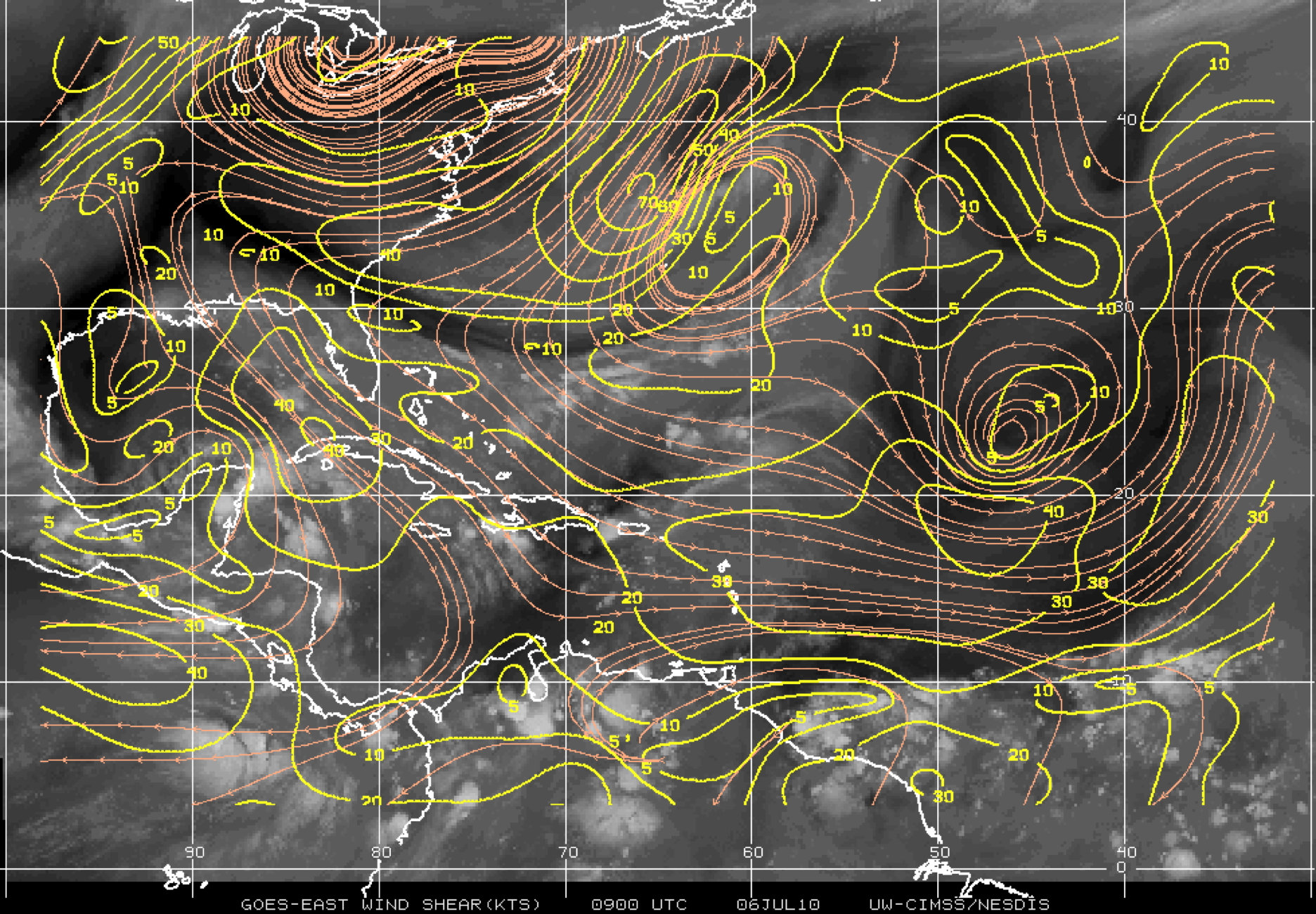
Figure July6-6. 850-200 hPa vertical shear calculated from satellite-derived cloud drift winds and NOGAPS analyses valid 09 UTC July 6.
Courtesy CIMSS-U. Wisconsin.
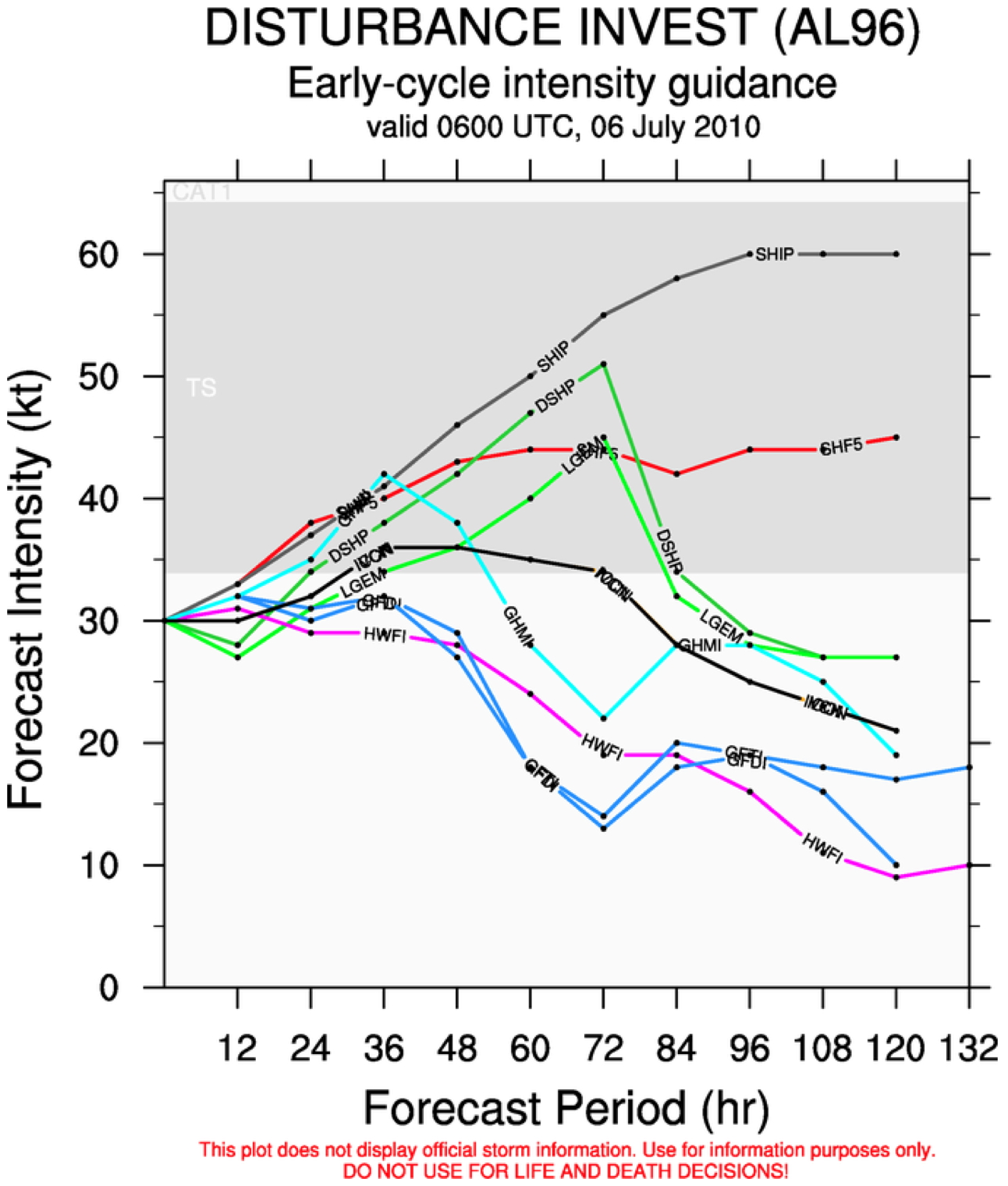
Figure July6-7. Intensity forecasts from 06 UTC July 6.
Courtesy Jonathan Vigh, hosted by CSU.
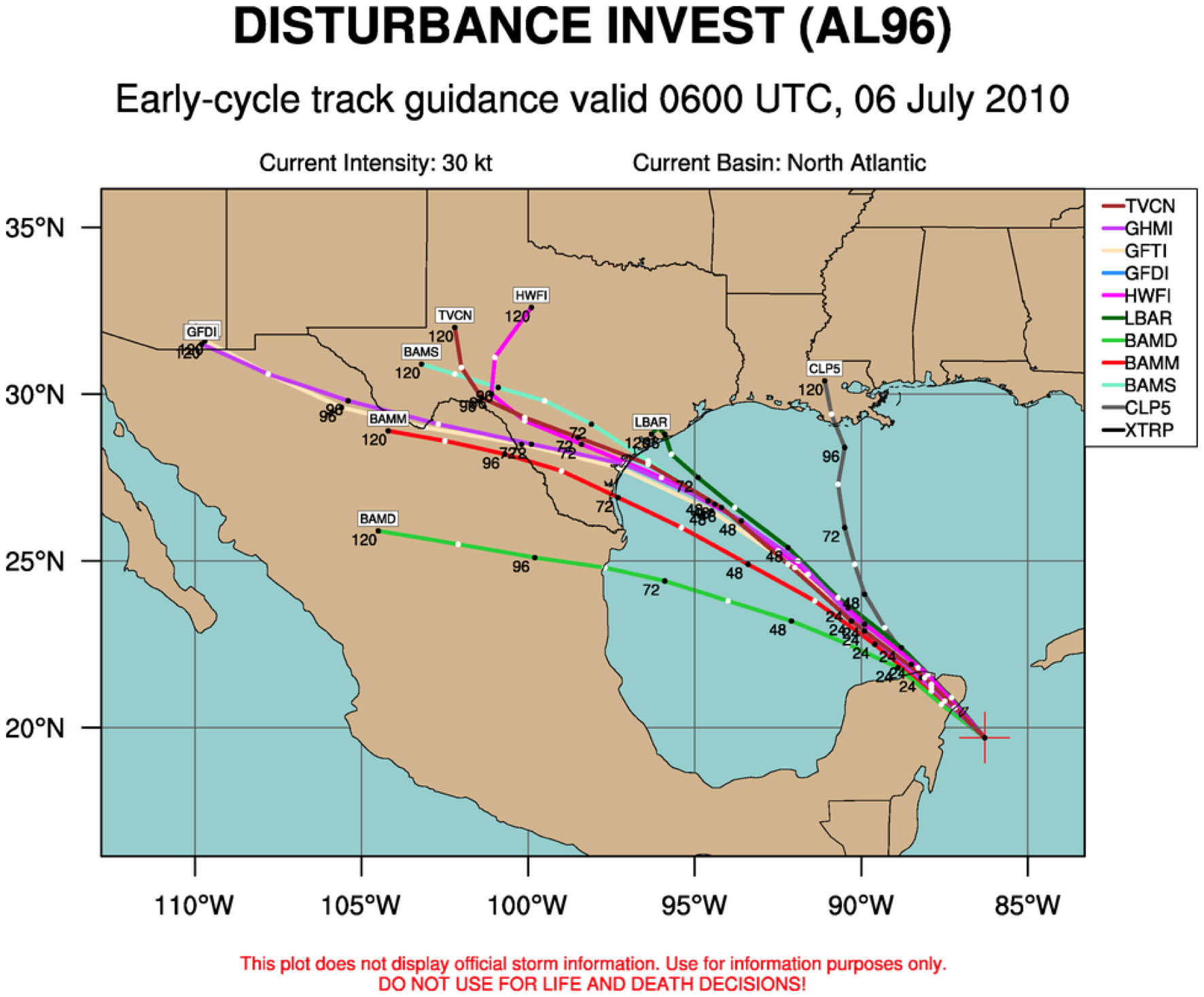
Figure July6-8. Track forecasts for 06 UTC July 6 model runs.
Courtesy Jonathan Vigh, hosted by CSU.







